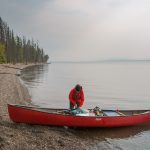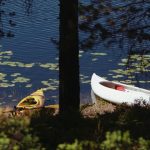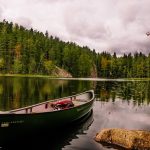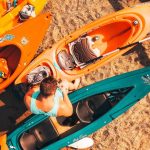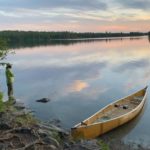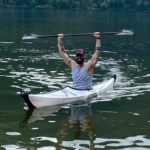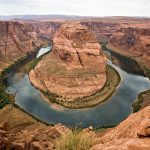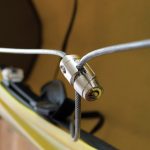Our guide to canoe accessories covers recreational and tripping gear that you can take with you on your canoe trips.

I’ve spent more nights under the stars – or laying under a boat when I’ve forgotten my tent fly again – than I can remember. From sea kayaking trips on Norweigian fjords to camping on river beaches in Nepal, and everything in between. Heck, just last week I got back from a multi-day canoeing river trip with friends, camping on islands as we went.
Along the way, I’ve picked up a whole load of tips and tricks. And the most important is to make sure you plan your trip properly. That way, you avoid surprises. So here’s my guide to planning a multi-day kayak or canoe trip.
Pick a Trip
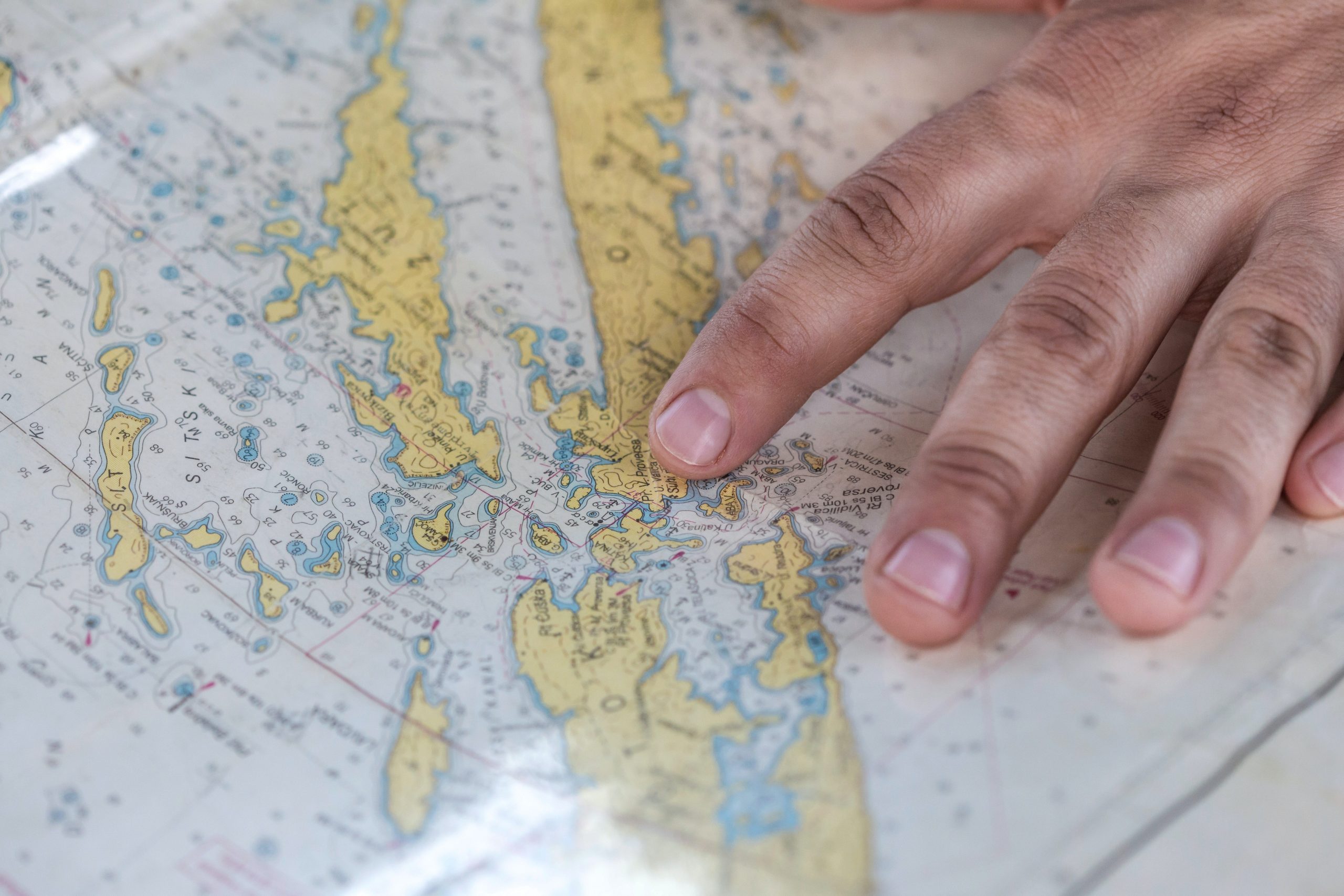
This is where I try to start planning for every trip I do. Every trip is different, even just slightly, so the sooner you have your chosen trip planned, the sooner you can start organizing it. Pick a guidebook up, check out the internet for ideas, or ask some local outfitters for their ideas on the best trips. You may also use this interactive map of places to go kayaking nearby.
The trip you chose will dictate everything. From the style of kayak or canoe you need to the equipment you will carry, the crew you take, and the skill you need on the water. You can’t start packing a tent just to decide on a trip that has no good tent camping and needs a hammock, right? Just like you can’t plan a sea kayaking trip when your whitewater kayak is already on the rooftop and ready to go.
Remember, the backcountry isn’t like your average day trip. If you’re new to overnight and multi-day trips, plan for a journey well within your capabilities. It’s not the place to be pushing your capabilities when you’re paddling a fully loaded boat and rescue is several hours away.
Research Local Guidance
Local knowledge is invaluable. Even if it’s a trip you know well if you’re traveling outside your local area get in touch with someone who lives locally. That way, you can find out about any recent changes, or anything you need to know that might affect your trip. Perhaps a mother bear has taken to raising her cubs where you were planning on camping, wouldn’t you rather know about that before you pitch up with your tent?
This local guidance can cover everything both on and off the water. Maybe there’s a campfire ban in place or a camping ban overall? What if a particular section of the river has changed, or a portage trail has been built that makes connecting two lakes easier? Really, if you’re not contacting the locals, you’re missing a trick.
Check the Conditions
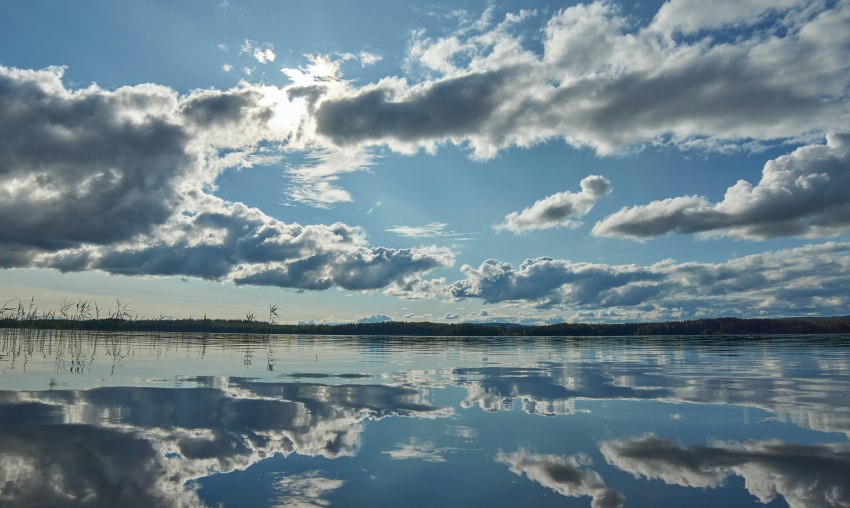
As soon as there is a long-range weather forecast available, start checking it routinely. A little rain shouldn’t dampen your spirits, but strong winds can definitely affect your plans. Keep an eye on the conditions as they change on a daily basis, including river levels, lake conditions, tide times, tidal flow strength, and even things like sunrise and sunset.
Sure, these don’t all change daily. Sunrise and sunset are predictable, as are the tides, but they sure affect your journey. If you need to beat the tide, you might have to be planning to get on the water early on a particular day, or sit and wait out the wind until it drops in the afternoon. You may even consider turning your whole trip around and reversing the journey so that the wind is on your back?
In our kayaks, we’re never going to beat the environment. Sometimes, we have to accept that we need to postpone a day or wait a day out on the beach if we’re on a longer trip. But a regular check of conditions up to your day of departure can make sure you’re as prepared as possible for your overnight journey.
Check Your Crew
Are you flying solo, or are you part of a crew? If you’re going out with a group then there are certain things you need to check before you hit the water.
Firstly, is everyone in the group up to the level of the trip? As we said earlier, the backcountry isn’t a place to push your limits, so it’s a good idea to make sure you’re not asking too much of anyone or putting them in a position where they’re set up to fail.
If everyone is good to go, then it’s time to see what everyone’s bringing to the party. Is there one person taking lead on the journey – either on or off the water – or is everything going to be decided by the group? Everyone in a group has a role to play, even if it’s not obvious. Is one person particularly skilled at backcountry cooking? Has one person got medic skills? Maybe there’s a member of your group who is great at fixing things or navigating, or has some specialist kit that will make the journey that much more comfortable.
This doesn’t designate anyone a role, but by knowing what skills you have in the group then you can identify areas of weakness and plug those gaps, either with extra team members or developing those you have. Try not to get your team too big, while we’re at it. The more the merrier reaches a point where you’re trying to navigate a whole bunch of people and the trip becomes more about crowd control than kayaking.
Get Your Logistics Dialled

Do not leave this until the end. Many meticulously planned multi-day trips have come unstuck at the logistics stage, so get this planned as early as possible so that it’s out of the way and you can get on with the good stuff.
The logistics. How are you going to get everyone, all of their kayaks or canoes, and all of their gear, to the start of your trip? If you’re doing a linear trip, how are you going to get them back from the end?
This is where your crew comes in. Does anyone have a truck, or trailer, that can take multiple kayaks? Will you run a shuttle to leave a vehicle at the end of the trip, or will you use a local outfitter to run it for you and save you time?
However you do things, make sure you know where your keys are while you’re on the water. You don’t want to finish a great few days in your kayak to find that the keys to your shuttle vehicle are in the truck you left at the put-in.
Lay Out Your Gear

If you’re a serial tripper, you may know where all of your gear is. It might even be packed already – though if you’ve not unpacked since your last trip I recommend giving everything a good airing out. But for most of the world’s multi-day kayakers, gear gets put away in the garage or cupboard and has to be brought out for each trip.
Now is the time to check your equipment. Is your tent all in one place? Does it have all the pegs? Have you got enough gas to power your stove?
I would recommend laying out two piles of gear to check through. Have one pile of your kayaking gear, including what you’re planning to wear on the water, and any safety equipment – helmets, spare paddles, bilge pumps – there too. Then make a separate pile of camping equipment. Remember to check in with your crew at this point. There are some things that everyone needs – a sleeping bag, PFD – but some things – stoves, first aid kits – don’t need to be carried by everyone.
Here is a simple packing list, but feel free to add to it, alter it, and make it your own. It also doesn’t cover specialist equipment that you might need for fishing trips or safety gear for rivers or open-water touring.
Individual Gear
- Kayaking/Canoeing equipment – kayak/canoe, paddle(s), PFD, cag, spray skirt, etc.
- Sleeping bag
- Tent – unless you’re sharing – or hammock, bivvy bag, tarp.
- Spare clothes – for off the water – weather dependent
- Spare footwear – for off the water
- Wash gear
- Water bottle
- Personal medication
- Snacks
- Insect/bear deterrent
- Headlamp and spare batteries
Group Gear
- Spare paddles and on-the-water safety gear
- Tarp – always a good idea for cooking under, sitting under etc.
- First aid kit
- Stove(s)
- Food
- Firewood and fire starter – if permitted
- Saw/axe – if firewood collection is permitted
- Navigation equipment
- Water purification
- Toilet tube – trowel, TP, sanitizer – check local guidance for backcountry toileting
Pack Your Gear
When you’re certain that you have everything you need, it’s time to pack your gear. If you’re paddling a sit-on-top kayak or a canoe, you will most likely use a barrel or a large dry bag for the trip, and you can do this at home. However, we recommend packing sit-in kayaks – especially touring kayaks – at the water.
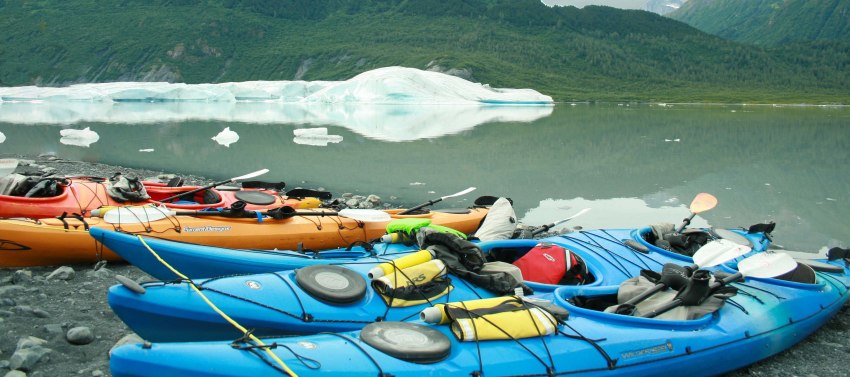
Your gear can easily add 25 lbs. of weight to your kayak. This doesn’t just make it harder to lift and load; the extra weight can damage your kayak while it’s in transit. But we do recommend a dry run at home, just to make sure everything is going to fit.
Whether you’re packing straight into a kayak, or into barrels or dry duffels, it’s a good idea to compartmentalize your packing using small dry bags.
This has two benefits. First, it makes it easier to find your gear, so when you get to camp you can pull out the right dry bag that has your stove, or tent in.
Secondly, it means that if there’s a little water ingress into your hatches, or you open your barrel in the rain, your gear isn’t going to get instantly soaked.
Try to pack your gear evenly into your boat to avoid offsetting the balance or trim. Overloading on one side of your boat can mean you have to constantly strain to keep your kayak flat. If you put too much weight at the front of your kayak, the bow will dig in and veer wildly around, but too much at the back and you’ll struggle to track into the wind.
Create a Float Plan
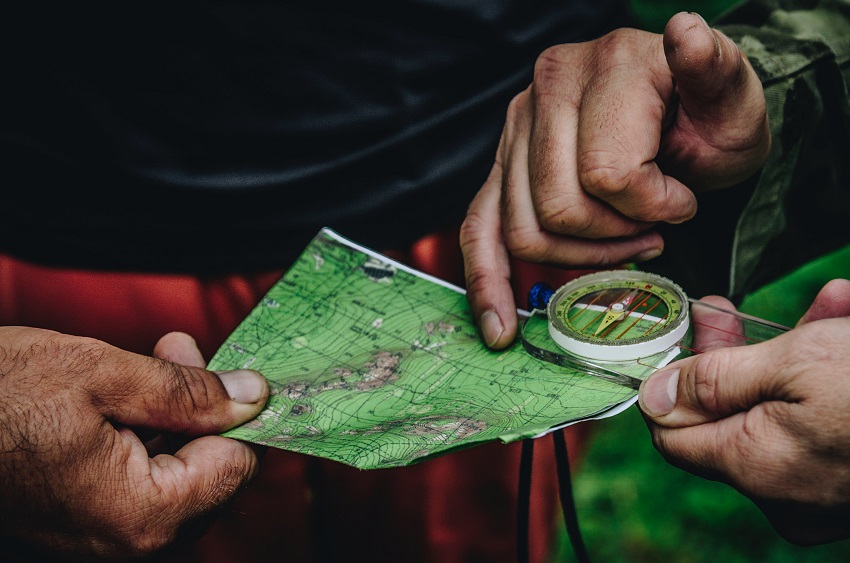
The float plan is your safety link to the outside world. These are important and even in the modern world where we all have phones, these can save your life. You never know, you might not have a cell signal, or your phone might die or take a dunking, so make sure you fill in a float plan.
If you’re not sure what a float plan is, check out our article here. But just briefly, these documents include your rough plan, your team members’ names and vessels, and your vehicle’s location and license plates. These should be left with a trusted friend or family member at home, along with instructions on what to do if you don’t return and how long to leave it before calling the authorities to start a search.
The critical thing here is to remember to get in touch with your home contact when you planned to. Plenty of search and rescue operations have been set into action only to find their believed casualties in a bar celebrating a great trip, having forgotten to phone it in at the end of their day.
Make a Plan B
Your trip shouldn’t be set in stone. When you’re planning your trip, be sure to check out alternative options that you can go for if the conditions change. These could include mid-trip changes and even the potential for hiking out to the truck if you really have to.
You have to be ready to change your plan when you’re going out kayak camping because even the most up-to-date weather forecasts aren’t always accurate. Don’t get too headstrong about your plan and force it when everything is going against you. Some of my best trips – looking back – have been the ones where I’ve been forced to change plans, it’s made me think outside the box and explore new places.
Start Off Gently

So you’re all set and ready to go. The big day is finally here. You’re excited. The crew is excited. But don’t set off at a million miles per hour.
Fully loaded kayaks and canoes are heavy and chances are you have a reasonably long way to go. Start off gently and ease yourself into the paddling until your muscles are warmed up. If you’re setting off straight into a strong headwind, tidal flow, or rapids, it’s never a bad idea to warm up.
You might feel a bit of a fool standing at the side of the river waving your arms around, stretching, and getting that blood pumping, but you’ll feel worse if you pull a muscle within five minutes of hitting the water. Remember to do this each day to avoid a mid-trip strain too.

